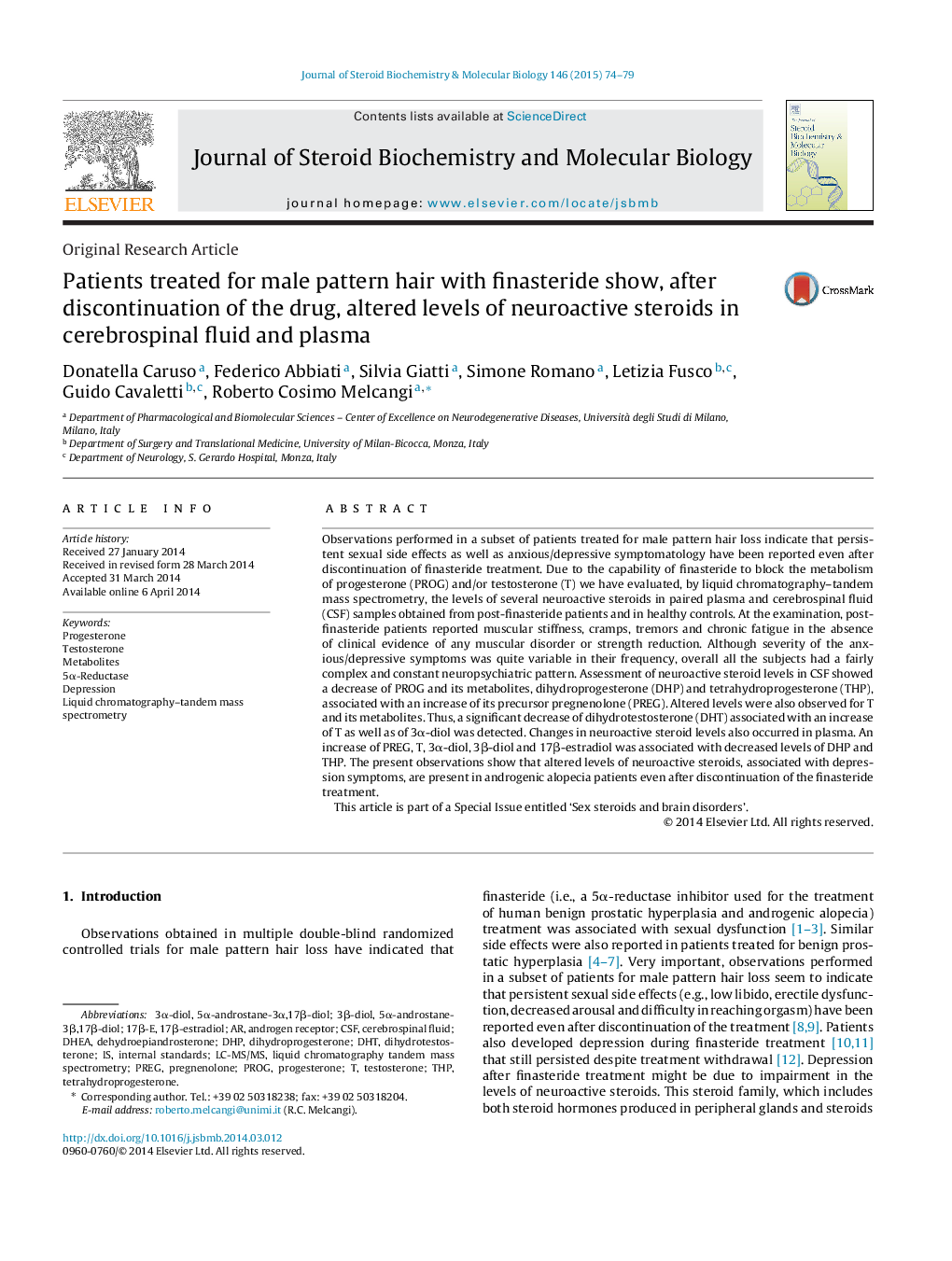| Article ID | Journal | Published Year | Pages | File Type |
|---|---|---|---|---|
| 1991388 | The Journal of Steroid Biochemistry and Molecular Biology | 2015 | 6 Pages |
•Post-finasteride patients show altered levels of neuroactive steroids.•Post-finasteride patients show persistent sexual side effects.•Post-finasteride patients show anxious/depressive symptomatology.
Observations performed in a subset of patients treated for male pattern hair loss indicate that persistent sexual side effects as well as anxious/depressive symptomatology have been reported even after discontinuation of finasteride treatment. Due to the capability of finasteride to block the metabolism of progesterone (PROG) and/or testosterone (T) we have evaluated, by liquid chromatography–tandem mass spectrometry, the levels of several neuroactive steroids in paired plasma and cerebrospinal fluid (CSF) samples obtained from post-finasteride patients and in healthy controls. At the examination, post-finasteride patients reported muscular stiffness, cramps, tremors and chronic fatigue in the absence of clinical evidence of any muscular disorder or strength reduction. Although severity of the anxious/depressive symptoms was quite variable in their frequency, overall all the subjects had a fairly complex and constant neuropsychiatric pattern. Assessment of neuroactive steroid levels in CSF showed a decrease of PROG and its metabolites, dihydroprogesterone (DHP) and tetrahydroprogesterone (THP), associated with an increase of its precursor pregnenolone (PREG). Altered levels were also observed for T and its metabolites. Thus, a significant decrease of dihydrotestosterone (DHT) associated with an increase of T as well as of 3α-diol was detected. Changes in neuroactive steroid levels also occurred in plasma. An increase of PREG, T, 3α-diol, 3β-diol and 17β-estradiol was associated with decreased levels of DHP and THP. The present observations show that altered levels of neuroactive steroids, associated with depression symptoms, are present in androgenic alopecia patients even after discontinuation of the finasteride treatment.This article is part of a Special Issue entitled ‘Sex steroids and brain disorders’.
